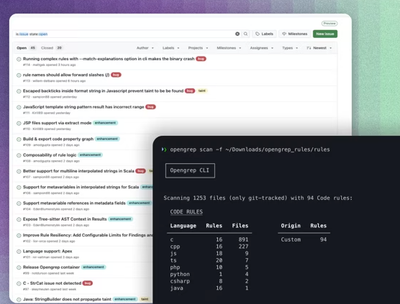Writeback
Writeback is a pluggable customizable Django app to collect feedback from site visitors using AJAX.
Installation
Install using pip::
pip install django-writeback
Quick start
-
Add "writeback" to your INSTALLED_APPS setting like this::
INSTALLED_APPS += ('writeback', )
-
Add context processor to your TEMPLATE_CONTEXT_PROCESSORS setting like this::
TEMPLATE_CONTEXT_PROCESSORS += ('writeback.context.add_form', )
-
Specify email settings WRITEBACK_EMAIL_NOTIFICATION_SUBJECT, WRITEBACK_EMAIL_NOTIFICATION_FROM and WRITEBACK_EMAIL_NOTIFICATION_TO_LIST. These will be used in email notifications.
-
Run python manage.py syncdb to synchronize the database.
-
Run python manage.py collectstatic or python manage.py collectstatic -i admin, if you want to omit collecting static for the admin app.
-
Include the writeback URLconf in your project urls.py like this::
url(r'^writeback/', include('writeback.urls')),
-
Modify your base template::
<!-- in header block -->
{% include "writeback/header.html" %}
<!-- in body block -->
{% include "writeback/button.html" %}
-
Override email_notification.html and button.html templates.
Model customization
The Message model, which is used for collecting feedback, can be extended:
-
Create an app, for example custom_writeback with a file, which shall contain class declaration, name it, models.py, for example.
-
Add this newly created app to your INSTALLED_APPS setting like this::
INSTALLED_APPS += ('custom_writeback', )
-
Declare your abstract model class anew or, if you want to extend the base model, inherit it from writeback.models.MessageAbstract like so::
from writeback.models import MessageAbstract
class MyMessageAbstract(MessageAbstract):
# define your custom fields
class Meta(MessageAbstract.Meta):
pass
-
Register your class in the project's settings.py::
WRITEBACK_MESSAGE_BASE_MODEL = 'custom_writeback.models.MyMessageAbstract'
-
Define a new form, which shall be used for the new model.
Form customization
If you have overriden or customized the Message model, you most probably need to customize the form. But even if you use the original model, you may want to change the form clean() method.
-
Create an app, for example custom_writeback (if you haven't already) with a file, which shall contain class declaration, name it, forms.py, for example.
-
Add this newly created app to your INSTALLED_APPS setting like this::
INSTALLED_APPS += ('custom_writeback', )
-
Declare your new form-class like so::
from django.utils.translation import ugettext_lazy as _
from django.forms import ValidationError
from writeback.forms import MessageCreateFormBase
from writeback.models import Message
class MessageCreateForm(MessageCreateFormBase):
class Meta:
model = Message
exclude = ['date_created', 'middle_name', 'company', 'info']
def clean(self):
cleaned_data = super(MessageCreateFormBase, self).clean()
name = cleaned_data.get("name")
family_name = cleaned_data.get("family_name")
phone = cleaned_data.get("phone")
email = cleaned_data.get("email")
if not (name or family_name or phone or email):
raise ValidationError(_("Please, fill out at least one field."))
return super(MessageCreateFormBase, self).clean()
-
Register your class in the project's settings.py::
WRITEBACK_MESSAGE_BASE_FORM = 'custom_writeback.forms.MessageCreateForm'



